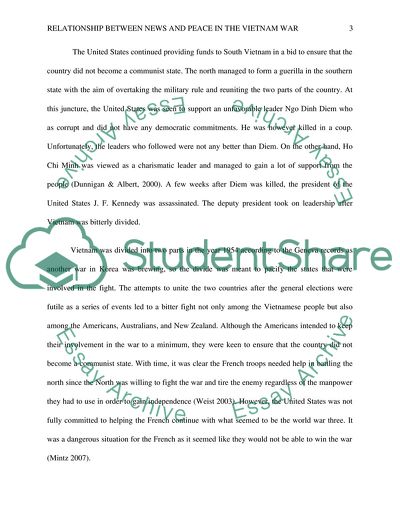Cite this document
(Relationship between News and Peace in the Vietnam War Report Example | Topics and Well Written Essays - 3750 words, n.d.)
Relationship between News and Peace in the Vietnam War Report Example | Topics and Well Written Essays - 3750 words. https://studentshare.org/media/1874094-discuss-the-relationship-between-news-and-peace-in-the-vietnam-war
Relationship between News and Peace in the Vietnam War Report Example | Topics and Well Written Essays - 3750 words. https://studentshare.org/media/1874094-discuss-the-relationship-between-news-and-peace-in-the-vietnam-war
(Relationship Between News and Peace in the Vietnam War Report Example | Topics and Well Written Essays - 3750 Words)
Relationship Between News and Peace in the Vietnam War Report Example | Topics and Well Written Essays - 3750 Words. https://studentshare.org/media/1874094-discuss-the-relationship-between-news-and-peace-in-the-vietnam-war.
Relationship Between News and Peace in the Vietnam War Report Example | Topics and Well Written Essays - 3750 Words. https://studentshare.org/media/1874094-discuss-the-relationship-between-news-and-peace-in-the-vietnam-war.
“Relationship Between News and Peace in the Vietnam War Report Example | Topics and Well Written Essays - 3750 Words”. https://studentshare.org/media/1874094-discuss-the-relationship-between-news-and-peace-in-the-vietnam-war.


